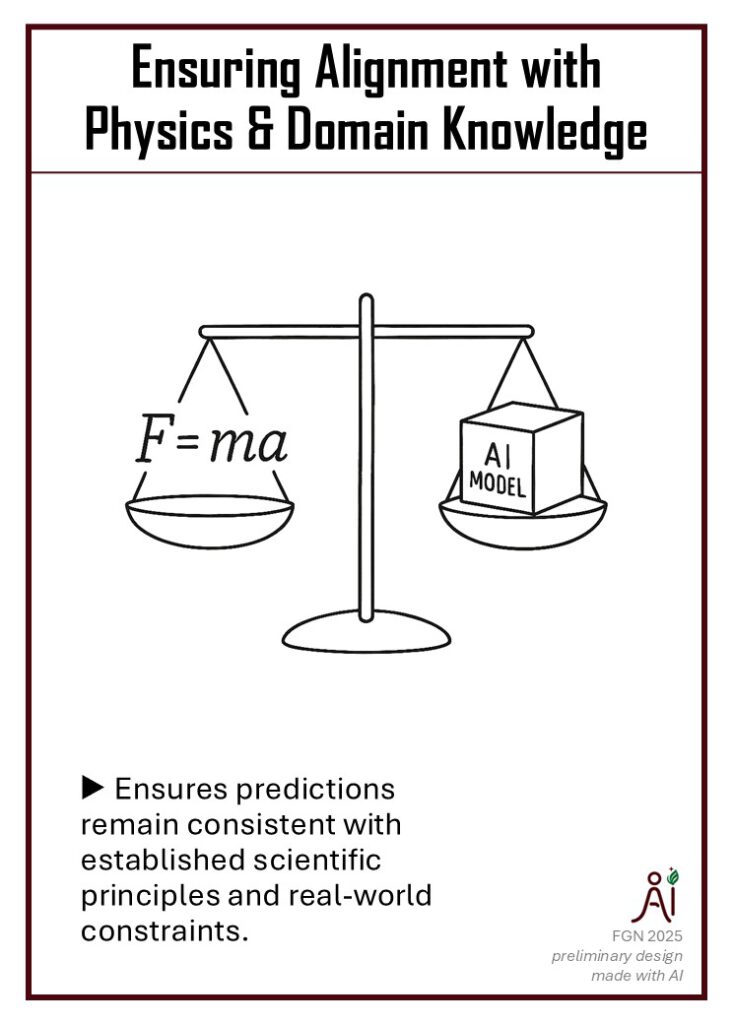
Physics and domain knowledge help make AI systems explainable and trustworthy by grounding their predictions and decisions in well-understood scientific principles. This integration enables AI models to move beyond black-box predictions, providing transparent and interpretable reasoning that aligns with real-world laws and domain-specific constraints.
By incorporating domain expertise, models can generate explanations that are meaningful and verifiable by human experts, thus fostering greater confidence and trust in AI outputs. Furthermore, physics-informed AI reduces the risk of spurious correlations by ensuring adherence to fundamental laws, which is especially valuable in applications like scientific discovery, engineering, and healthcare.
Example Methods
- Physics-Informed Neural Networks (PINNs): They embed physical laws as differential equations via special loss formulations into deep learning models.
- Symbolic regression models: They derive mathematical formulas governing physical systems from data.
- Expert systems that use knowledge bases
Demos & Further Reading
- Physics-informed machine learning
- Physics-informed Machine Learning (Karniadakis 2021 Nature Paper)
- GitHub – nguyenkhoa0209/pinns_tutorial: Tutorials for Physics-Informed Neural Networks
- Physics Informed Neural Networks (PINNs): Educational video from the University of Washing with coding demos
- PhysicsNeMo | NVIDIA Developer: an extensive Python framework, including examples for physics AI models such as PINNs. Supports interactive model building and training across multiple physics domains.
- Expert System Demos | VisiRule: A graphical tool that lets non-programmers create and run rule-based expert systems via decision logic charts. The demos include legal expert systems and machine diagnostic troubleshooting flows with interactive Q&A sessions and explanation paths
- Introduction to Equation Discovery – Comparing Symbolic Regression Methods.